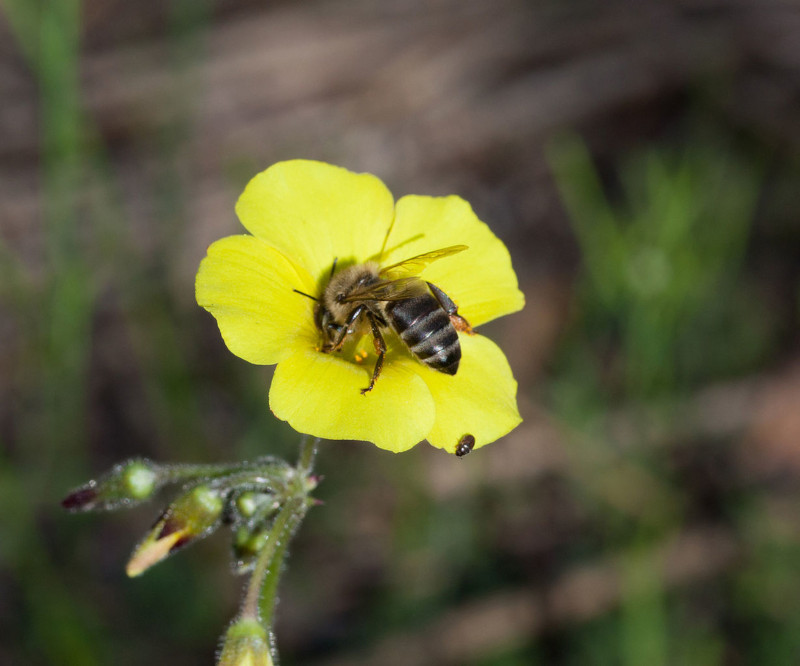Cape Honey Bee Facts
- The term Cape Honey Bee refers to a particularly remarkable subspecies of the Western honey bee. It also goes by the difficult to pronounce scientific name of the Apis mellifera capensis. By either name, however, it stand out from related species for a unique reason. In fact, due to this trait, many consider it to be the most distinctive subspecies of the honey bee on earth.
- This species evolved a unique reproductive adaptability. Most honey bee colonies will perish if the queen dies. Yet, if such an event occurs in a hive of this bee, a number of workers will develop ovaries, and begin laying eggs for drones. These bee drones will be sexually viable and mate with new queens from other hives. One or more of the newly fertilized queens will then return to the hive.
- Although the Cape Honey Bee only inhabits a moderate-sized zone of habitation, its numbers appear to be relatively stable at the moment. Therefore, the IUCN presently has no listing for it on its Red List. But, between 2008 – 2015, a disease decimated its population. Given its reduced numbers, it must be considered to be at particular risk due to the ongoing threat posed by climate change.
Related Articles
Cape Honey Bee Physical Description
At first glance, the wonderful Cape Honey Bee bears a striking resemblance to another variety of honey bee sharing the same range. Like that species, and many others, it also displays the physiological trait of sexual dimorphism. However, this trait also displays itself in the same manner as related species.
As a result, the queen of this amazing species attains a larger size than the workers and drones of the hive. In fact, the head and thorax of the queen reaches the same approximate size as that of the worker. The difference in overall size occurs due to the fact that her abdomen grows significantly longer and thicker.
Meanwhile, the workers remain slightly smaller in size than the queen and the drones. In addition, the body of the worker has a specialized construction. The hind legs of this bee has an added feature, a basket for collecting and carrying pollen. This caste also remains sexually immature, and thus unable to mate.
Finally, the drones of the Cape Honey Bee represent the male caste of this arthropod. The thorax and head reach a larger size than the female, and the eyes are set higher on the head. Furthermore, the abdomen develops as thick and blunt in shape. By comparison, that of the female possesses a much more pointed shaped.
- Kingdom: Animalia
- Phylum: Arthropoda
- Class: Insecta
- Order: Hymenoptera
- Family: Apidae
- Genus: Apis
- Species: A. mellifera
Cape Honey Bee Distribution, Habitat, and Ecology
The remarkable Cape Honey Bee has even more surprises for those new to it. For one, the fascinating species actually evolved as native to a specific and highly contained eco-region of the world. In point of fact, that area of habitation consists of the southwestern portion of the country of South Africa, on the continent of Africa. This location itself forms part of what remains popular as the Fynbos eco-region.
Even more specifically, the entire endemic range of the truly remarkable arthropod remains constrained to an extremely small area. That’s because this consists of a single quite narrow strip of land. Further, this reaches from Port Elizabeth in the east, to the extreme southwestern corner of the country. Within this range, it is highly adaptable in its choice of habitat and lives in areas ranging from scrubland to tropical rainforest.
The Cape Honey Bee has three distinct classes. These are the queens, workers, and drones. The workers remain unable to mate, except in the event of the loss of a queen. This forms a unique evolutionary adaptation. The drones are the males of the hive. Both genders possess stingers. Yet, the function of the stinger differs in the genders. The female may sting repeatedly whereas the male will lose his stinger with its first use.
Species Sharing Its Range
Check out our other articles on 5 Rare Mind-Blowing Cloud Types, Basking Shark, Blyde River Canyon, Gorges du tarn, Devils Walking Stick, Blue Death Feigning Beetle, Limnonectes larvaepartus

